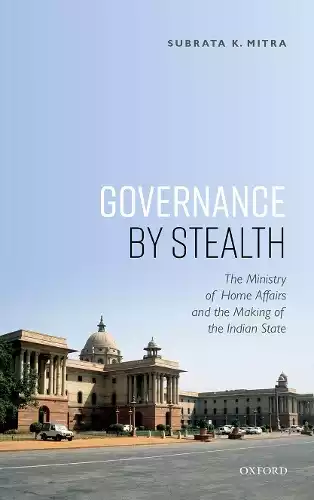
Save: 20%

Save: 20%
GOVERNANCE BY STEALTH_C
Publisher:
| Author:
| Language:
| Format:
Publisher:
Author:
Language:
Format:
₹2,295 ₹1,836
Save: 20%
Out of stock
Receive in-stock notifications for this.
Ships within:
Out of stock
| Weight | 606 g |
|---|---|
| Book Type |
ISBN:
Page Extent:
India’s Ministry of Home Affairs, with its striking durability, and ability to adapt to the transition from colonial rule to post-colonial governance, is a remarkable example of institutional resilience. Home’s special expertise in governance by stealth – maximum order with the use of minimum force – was instrumental for the department to acquire a secure niche within the colonial structure. Following the end of colonial rule in 1947, the Home Department, still ensconced in the majestic North Block of Delhi, mutated into the Home Ministry of the Indian Republic. How a colonial institution whose key task was to hold Indian nationalism at bay became the architect of the post-colonial state and nation, is one of the main questions to which I respond in this book. Home’s multiple roles as the keeper of public order, mentor to public services and the invisible sinews of the state that holds the noisy democracy and assertive regions together to explain its exalted status in India’s governance and politics. My analysis, based on declassified files of the Ministry of Home Affairs, correspondences, biographies and interviews, explores the multiple roles of the Ministry, with its penchant for governance by stealth as my focus
India’s Ministry of Home Affairs, with its striking durability, and ability to adapt to the transition from colonial rule to post-colonial governance, is a remarkable example of institutional resilience. Home’s special expertise in governance by stealth – maximum order with the use of minimum force – was instrumental for the department to acquire a secure niche within the colonial structure. Following the end of colonial rule in 1947, the Home Department, still ensconced in the majestic North Block of Delhi, mutated into the Home Ministry of the Indian Republic. How a colonial institution whose key task was to hold Indian nationalism at bay became the architect of the post-colonial state and nation, is one of the main questions to which I respond in this book. Home’s multiple roles as the keeper of public order, mentor to public services and the invisible sinews of the state that holds the noisy democracy and assertive regions together to explain its exalted status in India’s governance and politics. My analysis, based on declassified files of the Ministry of Home Affairs, correspondences, biographies and interviews, explores the multiple roles of the Ministry, with its penchant for governance by stealth as my focus
About Author
Reviews
There are no reviews yet.
Related products
Civil Society and Citizenship in India and Bangladesh
Save: 25%
FROM KARGIL TO THE COUP Events That Shook Pakistan HB.
Save: 20%
How China Loses: The Pushback Against Chinese Global Ambitions
Save: 20%



Reviews
There are no reviews yet.